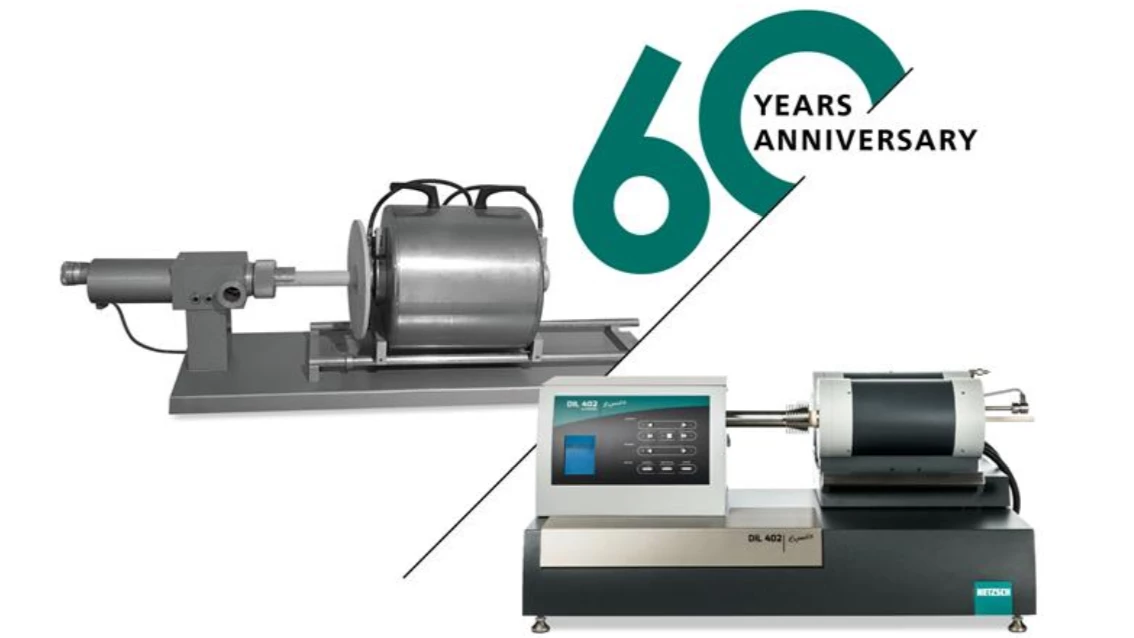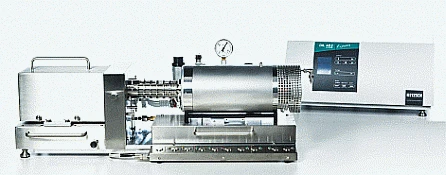
24.01.2022 by Aileen Sammler
60 anos de NETZSCH-Gerätebau GmbH - Nosso Dilatômetro - Parte III
Como parte da campanha de comunicação em torno do nosso 60º aniversário, o mês de janeiro é todo dedicado ao dilatômetro. Hoje, entraremos em detalhes sobre as diferentes áreas de aplicação dos dilatômetros. E não se esqueça, a rifa vai até o dia 9 de fevereiro!

Como parte de nossa campanha de comunicação, o mês de janeiro é todo dedicado ao dilatômetro. Hoje, entraremos em detalhes sobre as diferentes áreas de aplicação dos dilatômetros. E não se esqueça, o sorteio vai até o dia 9 de fevereiro!
Patenteado NETZSCH Tecnologia de ponta
Atualmente, nós da NETZSCH temos o melhor sistema de medição para dilatometria. A configuração funcional de nossa unidade de medição é patenteada em muitos países e apresenta inúmeras vantagens, tais como:
- Faixa ilimitada do comprimento inicial da amostra e alteração do comprimento com maior resolução
- Força de contato definida, baixa e constante
- Movimento reprodutível e sem choques da haste por meio da regulagem do controle de força
- Reconhecimento automático do comprimento inicial da amostra
Consulte aqui selected dilatômetros para uma ampla gama de campos de aplicação:



O dilatômetro permite a medição de uma ampla variedade de materiais
Atualmente, o dilatômetro pode ser usado para medir uma variedade de materiais, desde plásticos, cerâmica e vidro até materiais de construção.
As alterações na composição do vidro também podem ser determinadas de forma rápida e fácil por meio da medição dos coeficientes de expansão térmica ou da determinação da Temperatura de transição do vidroA transição vítrea é uma das propriedades mais importantes dos materiais amorfos e semicristalinos, por exemplo, vidros inorgânicos, metais amorfos, polímeros, produtos farmacêuticos e ingredientes alimentícios etc., e descreve a região de temperatura em que as propriedades mecânicas dos materiais mudam de duras e quebradiças para mais macias, deformáveis ou emborrachadas.temperatura de transição do vidro. Além disso, as Transições de faseO termo transição de fase (ou mudança de fase) é mais comumente usado para descrever transições entre os estados sólido, líquido e gasoso.transições de fase influenciam o comportamento de expansão e retração dos materiais de construção, como o concreto. Isso tem um impacto significativo na confiabilidade estatística e na vida útil dos sistemas em que são usados. Por meio da dilatometria, é possível realizar investigações de alterações dimensionais, como expansão e retração, incluindo alterações de volume.arcEsses métodos têm sido empregados com sucesso há décadas no setor e nos centros de pesquisaarch, como o centro de pesquisa europeu CERN, próximo a Genebra, na Suíça. Esperamos ter muitas outras décadas de dilatometria.
Você sabia?
NETZSCH-A Gerätebau também é líder no campo de dilatômetros de baixa temperatura até -260°C. Esses dilatômetros são usados, por exemplo, para testes de funcionalidade em trens de levitação magnética.
